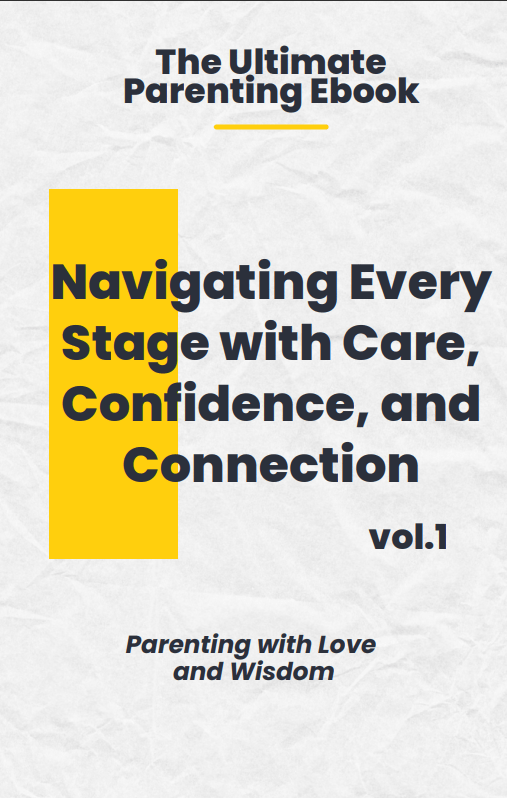
Welcoming a newborn is a beautiful journey filled with joy and a fair share of worries. One of the biggest concerns for new moms is ensuring their baby is getting enough milk. While weight gain and diaper counts are commonly discussed, there are uncommon signs your newborn is getting enough breast milk that can provide additional reassurance. Let’s dive into these subtle indicators that might just put your mind at ease.
In This Blog
ToggleCommon Misconceptions About Newborn Milk Intake
Many parents rely solely on the typical signs like steady weight gain and frequent wet diapers to gauge if their baby is well-fed. However, common misconceptions suggest that if these basics are met, everything else is fine. The truth is, these signs are essential but not the whole picture. Understanding the uncommon signs your newborn is getting adequate breast milk can give you a more comprehensive view of your baby’s health and nutrition.
Uncommon Physical Signs
Skin Appearance and Hydration
Healthy skin is a glowing indicator of proper hydration and nutrition. Uncommon physical signs include:
- Soft, supple skin: Well-hydrated babies have soft and elastic skin.
- Mild jaundice reduction: While some yellowing is normal, a decrease over time can signify adequate feeding.
These subtle changes are often overlooked but crucial in assessing your newborn’s milk intake.
Alertness and Activity Levels
A content and well-fed baby tends to be more alert and active during awake periods. If your newborn is:
- Engaging with their surroundings: Showing interest in sights and sounds.
- Responsive to stimuli: Smiling, cooing, and reacting to gentle touches.
These behaviors indicate that your baby is getting enough nutrition to support their growing brain and energy levels.
Gentle Sucking Patterns
Beyond just the duration of feeding, the quality of your baby’s sucking can reveal a lot. Gentle sucking patterns include:
- Rhythmic sucking: A steady rhythm without interruptions signifies satisfaction.
- Efficient milk transfer: Quick and effective sucking without prolonged fussiness suggests adequate milk intake.
Understanding these patterns can help you feel more confident about your baby’s feeding habits.
Behavioral Signs
Contentedness After Feeding
A well-fed newborn usually feels content and satisfied after a feeding session. Signs include:
- Relaxed body: Baby settles down easily after feeding.
- Happy demeanor: Giggling, smiling, or simply being calm.
These behaviors are positive indicators that your newborn’s hunger is adequately addressed.
Consistent Sleep Patterns
Adequate milk intake contributes to regular sleep schedules. Babies who get enough milk tend to:
- Sleep longer stretches: Both day and night sleep periods are more consistent.
- Wake less frequently: Reduced night wakings can be a sign of sufficient nourishment.
Good sleep patterns are not only a relief for parents but also crucial for your baby’s development.
Developmental Milestones Linked to Nutrition
Early Motor Skills Development
Nutrition directly affects your baby’s motor skills. Well-fed newborns often exhibit:
- Improved muscle tone: Stronger movements and grips.
- Enhanced head control: Earlier and more stable head holding.
These milestones are subtle but important signs that your baby is receiving enough milk to support physical growth.
Social Engagement
A nourished baby is more likely to engage socially. Look for:
- Increased eye contact: Making and maintaining eye contact.
- Interactive behaviors: Responding to your voice and facial expressions.
These social cues indicate cognitive and emotional benefits from adequate feeding.
How to Monitor and Track These Uncommon Signs
Using a Feeding Journal
Keeping a detailed feeding journal can help you track more than just the obvious signs. Include:
- Feeding times and durations: Note each feeding session’s specifics.
- Observable behaviors post-feeding: Record your baby’s mood and activity levels.
- Physical signs: Track skin condition and hydration levels.
This comprehensive approach can highlight patterns that indicate your newborn is getting enough milk.
Leveraging Technology
Modern parents can use breastfeeding tracking apps to monitor these uncommon signs. Features to look for include:
- Symptom tracking: Log subtle signs like skin appearance and alertness.
- Milestone tracking: Keep an eye on developmental progress linked to nutrition.
- Alerts and reminders: Stay consistent with feeding schedules and check-ups.
Technology offers an efficient way to stay informed about your baby’s nutrition.
When to Consult a Pediatrician
Red Flags vs. Uncommon Signs
While uncommon signs your newborn is getting enough milk are reassuring, it’s important to recognize when to seek professional help. Red flags include:
- Persistent crying: Beyond normal fussiness.
- Lack of weight gain: Despite regular feeding.
- Dehydration symptoms: Such as dry mouth or sunken eyes.
Differentiating between normal variations and potential issues is crucial for your baby’s health.
Professional Guidance on Feeding
Consulting a pediatrician can provide personalized advice. They can help you:
- Interpret signs accurately: Ensure you’re reading your baby’s cues correctly.
- Adjust feeding techniques: Improve latching or feeding positions if needed.
- Address underlying issues: Identify and treat any health concerns affecting feeding.
Professional support is invaluable in navigating feeding challenges.
Real-Life Stories and Testimonials
Case Studies
Hearing from other parents can be incredibly comforting. For example:
- Sarah’s Story: She noticed her baby’s improved muscle tone and was reassured that these were signs her newborn was getting enough milk.
- James’ Experience: Tracking his baby’s sleep patterns helped him confirm adequate milk intake without obsessing over weight gain alone.
Expert Opinions
Lactation consultants emphasize the importance of uncommon signs in ensuring proper nutrition. They suggest paying attention to behaviors like alertness and social engagement as key indicators of a well-fed baby.

Conclusion
Understanding the uncommon signs your newborn is getting enough milk can provide peace of mind and confidence in your parenting journey. Beyond the typical metrics, these subtle indicators offer a deeper assurance that your baby is healthy and well-nourished. Trust your instincts, observe these signs, and don’t hesitate to seek professional advice when needed.
Feeling more confident about your baby’s milk intake? Share your experiences in the comments below or subscribe to our newsletter for more parenting tips and insights. You’re not alone on this journey.
You may also be interested in : Baby Care Hacks: 9 Secrets Every New Mom Wishes She Knew
FAQs
1. What are some uncommon physical signs my newborn is getting enough breast milk?
Beyond weight gain and diaper counts, uncommon physical signs include soft, supple skin and a reduction in mild jaundice. These subtle indicators reflect proper hydration and nutrition, showing that your baby is well-fed even if typical signs seem adequate.
2. How does my baby’s skin indicate adequate breast milk intake?
Healthy, soft and elastic skin is a great indicator. Well-hydrated babies from sufficient milk intake often have a glowing complexion and fewer dry or flaky areas, reflecting proper nutrition and hydration levels.
3. Can my newborn’s alertness show they are getting enough milk?
Absolutely! A well-fed baby tends to be more alert and active during awake times. If your newborn engages with their surroundings, responds to stimuli, and shows interest in sights and sounds, it’s a positive sign they’re receiving enough breast milk.
4. What gentle sucking patterns indicate my baby is satisfied?
Gentle sucking patterns such as rhythmic, steady sucking and efficient milk transfer without prolonged fussiness suggest that your baby is getting sufficient milk. These patterns show effective feeding and satisfaction post-feeding.
5. How does contentedness after feeding signify adequate milk intake?
When your newborn feels content and satisfied after feeding, it indicates that their hunger has been adequately addressed. Signs include a relaxed body, calm demeanor, and peaceful sleep, all suggesting proper nutrition.
6. What consistent sleep patterns indicate my newborn is getting enough milk?
Babies who receive adequate milk often have consistent sleep patterns, including longer stretches of sleep and fewer night wakings. Quality sleep reflects proper nourishment and helps in their overall development.
7. How does my baby’s motor skill development relate to breast milk intake?
Proper motor skills development, such as improved muscle tone and enhanced head control, are linked to adequate nutrition from breast milk. These developmental milestones show that your baby is receiving the necessary nutrients for physical growth.
8. In what ways does social engagement reflect sufficient milk intake?
A nourished baby is more likely to exhibit social engagement, including increased eye contact and interactive behaviors like smiling and responding to voices. These social cues indicate cognitive and emotional benefits from adequate feeding.
9. How can a feeding journal help track if my newborn is getting enough milk?
A feeding journal allows you to record feeding times, durations, and post-feeding behaviors. By tracking these details, you can identify patterns and subtle signs that indicate whether your newborn is receiving sufficient breast milk.
10. What features should I look for in breastfeeding tracking apps?
Choose apps that offer symptom tracking, milestone tracking, and reminders. These features help monitor subtle signs like skin appearance and alertness, ensuring you stay informed about your baby’s nutrition and feeding schedule.
11. When should I consult a pediatrician about my baby’s milk intake?
If you notice red flags such as persistent crying, lack of weight gain despite regular feeding, or symptoms of dehydration like dry mouth or sunken eyes, it’s crucial to consult a pediatrician for professional guidance.
12. What are the differences between red flags and uncommon signs of adequate milk intake?
Red flags indicate potential issues and require immediate attention, such as significant weight loss or dehydration. Uncommon signs are subtle indicators that your baby is well-fed, like soft skin and alertness, providing additional reassurance.
13. How can professional guidance help with breastfeeding challenges?
Professional guidance from pediatricians or lactation consultants can help interpret feeding signs accurately, improve feeding techniques, and address any underlying health concerns, ensuring your baby receives adequate nutrition.
14. What real-life stories highlight uncommon signs of sufficient milk intake?
Hearing case studies like Sarah noticing her baby’s improved muscle tone or James tracking his baby’s sleep patterns can provide reassurance and practical insights into recognizing uncommon signs of adequate milk intake.
15. How do lactation consultants view uncommon signs of milk intake?
Experts emphasize the importance of observing behaviors like alertness and social engagement. These signs offer a deeper understanding of your baby’s nutritional status beyond basic metrics, ensuring comprehensive care.
16. Are there cultural differences in recognizing if a newborn is getting enough milk?
Yes, different cultural perspectives offer unique ways to assess a baby’s milk intake. Exploring these can provide a diverse range of indicators and practices, enriching your understanding and approach to breastfeeding.
17. How does maternal health affect my newborn’s milk intake?
Maternal health plays a crucial role in milk production and quality. Factors like nutrition, stress levels, and overall well-being directly impact your ability to provide sufficient breast milk for your baby.
18. What environmental factors can affect my baby’s milk intake?
Environmental factors such as a calm feeding environment, proper lighting, and minimal distractions can enhance your baby’s feeding experience, ensuring they receive adequate breast milk and feel comfortable during feedings.
19. Can technology enhance the way I monitor my baby’s milk intake?
Yes, using breastfeeding tracking apps and other technological tools can help you monitor subtle signs, maintain feeding schedules, and track developmental milestones, making it easier to ensure your newborn is well-nourished.
20. Why is it important to recognize uncommon signs of adequate milk intake?
Recognizing uncommon signs provides a more comprehensive understanding of your baby’s nutrition and health. It reassures you beyond the basic metrics, helping you feel confident and informed in your parenting journey.




